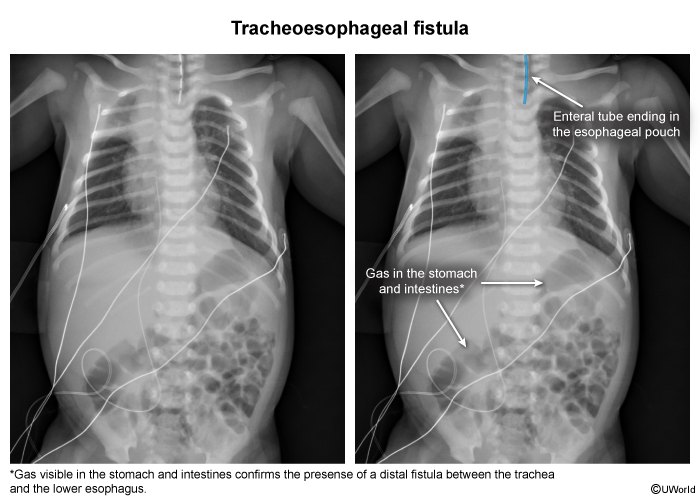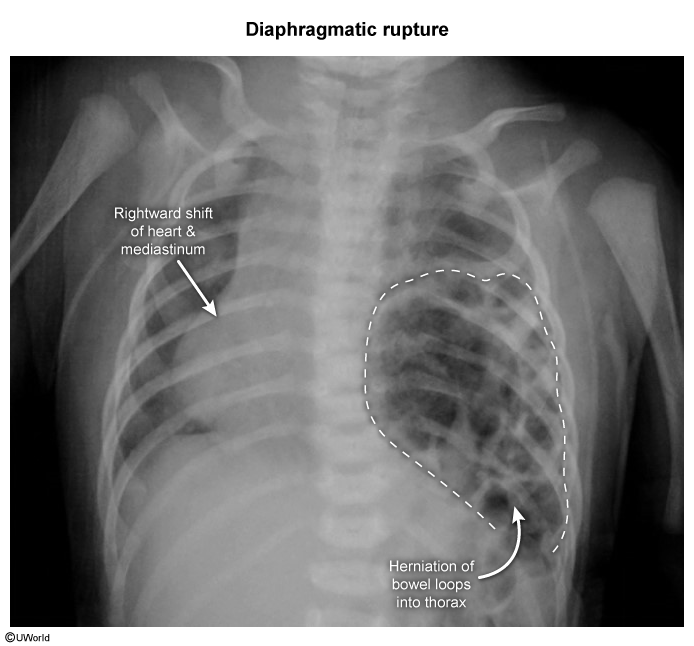Esophageal Atresia And Tracheoesophageal Fistula
Article Sections
Introduction
Esophageal atresia with tracheoesophageal fistula (TEF) is a congenital condition resulting from failure of the primitive foregut to appropriately divide into separate and patent tracheal and esophageal structures. Patients present immediately after birth with excessive oral secretions and choking, cough, or vomiting with feeding attempts.
Pathophysiology
At 4 weeks gestation, the trachea begins to develop from a diverticulum of the primitive foregut. This tracheobronchial diverticulum lengthens and separates to form the respiratory tract, while the remaining portion becomes the esophagus.
Failure of the foregut to separate most commonly leads to esophageal atresia (ie, blind-ending pouch) and a fistula between the trachea and distal esophagus. The underlying mechanism of this process is unknown but is likely multifactorial, involving genetic and environmental factors.
Classification
Esophageal atresia and TEF can present in various anatomic arrangements (
Continue Learning with UWorld
Get the full Esophageal Atresia And Tracheoesophageal Fistula article plus rich visuals, real-world cases, and in-depth insights from medical experts, all available through the UWorld Medical Library.
Figures
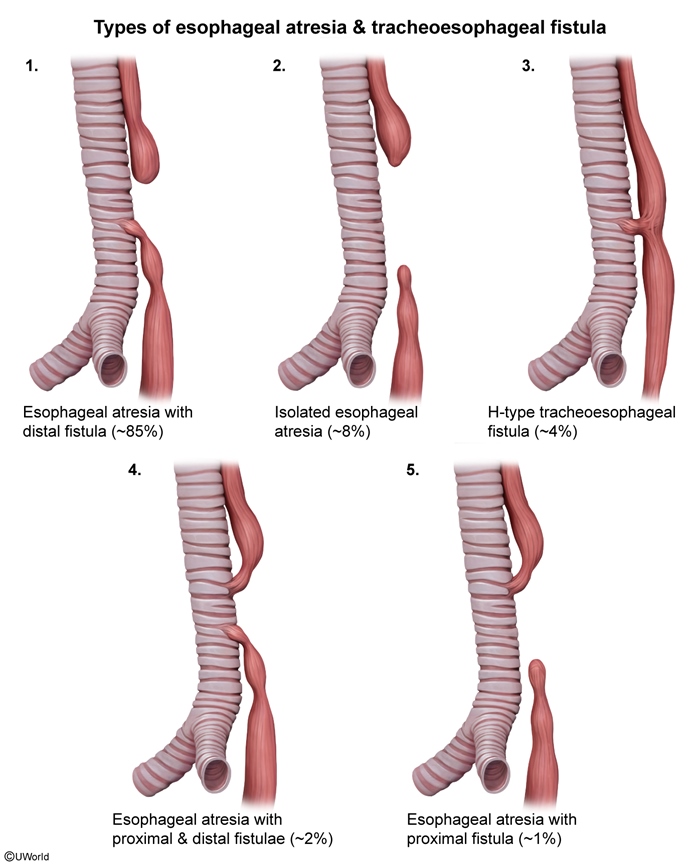
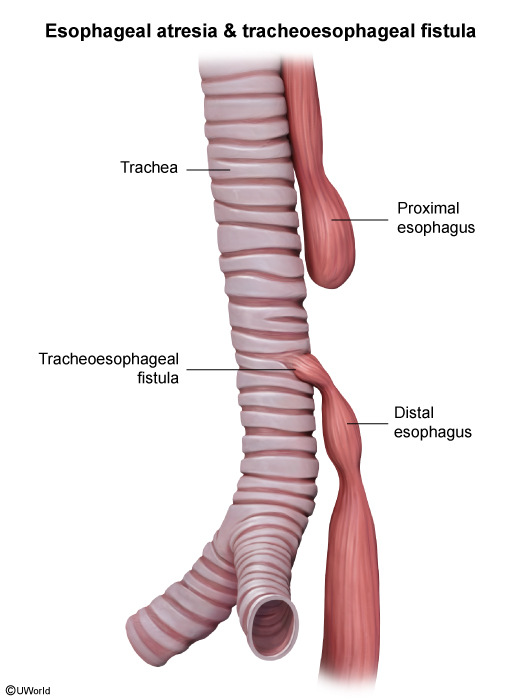
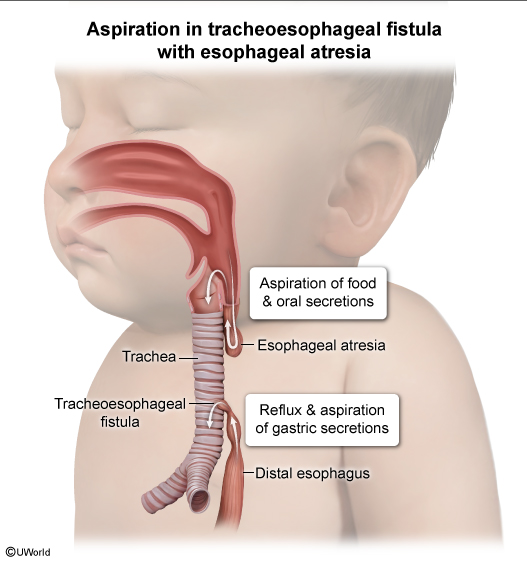
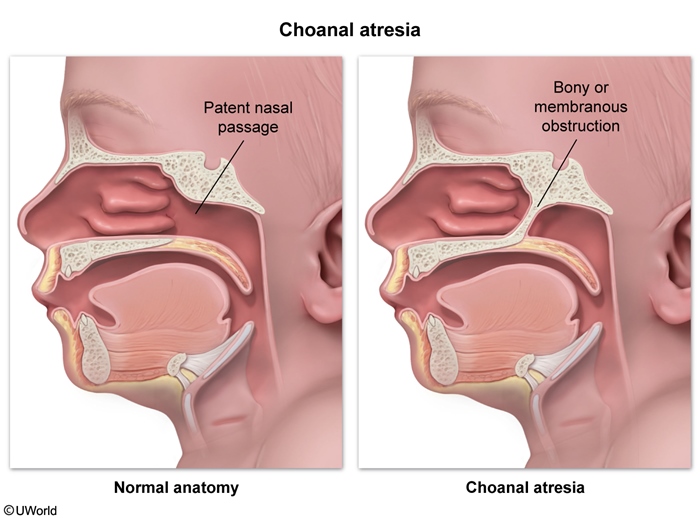
Images
